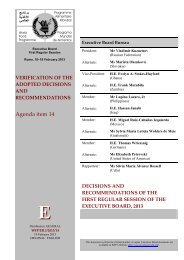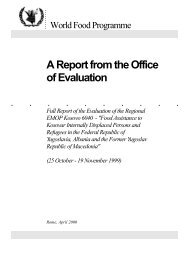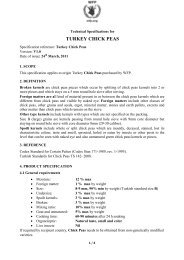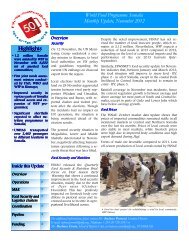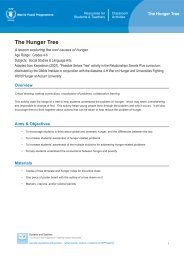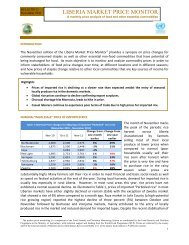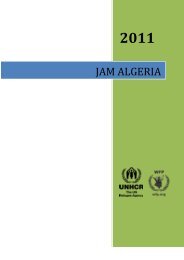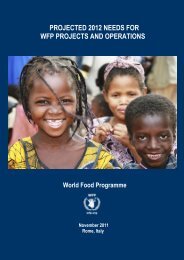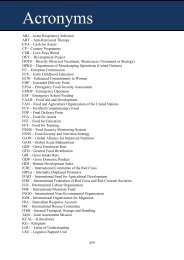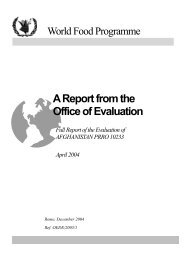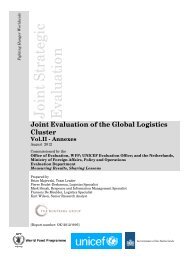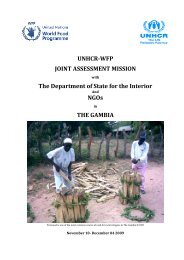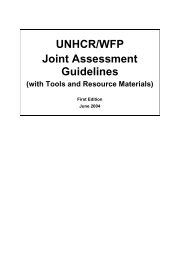The Potential for Scale and Sustainability in Weather Index Insurance
The Potential for Scale and Sustainability in Weather Index Insurance
The Potential for Scale and Sustainability in Weather Index Insurance
You also want an ePaper? Increase the reach of your titles
YUMPU automatically turns print PDFs into web optimized ePapers that Google loves.
124<br />
Table 15: Forage Ra<strong>in</strong>fall Plan: Product particulars (2009)<br />
L<strong>and</strong> type: Value:<br />
CASE STUDY 6<br />
FORAGE RAINFALL PLAN IN ONTARIO, CANADA<br />
Rough l<strong>and</strong> pasture C$25/acre<br />
Improved pasture C$25-100/acre<br />
Intensely-managed pasture (or hay l<strong>and</strong>) C$100-300/acre<br />
Coverage amount C$2,000 up to a maximum equal to total value<br />
of crop (based on l<strong>and</strong> type values)<br />
Coverage plan options: Particulars:<br />
Base plan Places equal weight on ra<strong>in</strong>fall May to August<br />
Monthly weight<strong>in</strong>g Ra<strong>in</strong>fall is weighted as follows (based on<br />
deficit/surplus):<br />
May: 130%; June: 120%; July: 80%; August: 70%<br />
Three-month plan Equal weight<strong>in</strong>g May to July (August not used)<br />
Bimonthly plan May <strong>and</strong> June ra<strong>in</strong>fall are added together, <strong>and</strong><br />
July <strong>and</strong> August ra<strong>in</strong>fall are added together.<br />
Separate claim amounts are calculated <strong>for</strong> the<br />
May-June period <strong>and</strong> the July-August period. <strong>The</strong><br />
claim amount that is paid to a <strong>for</strong>age producer<br />
equals 60% of the May-June claim plus 40% of<br />
the July-August claim<br />
Incentives Provides collateral required to secure loans<br />
Pr<strong>in</strong>cipal stakeholders <strong>and</strong> delivery channels<br />
AgriCorp is responsible <strong>for</strong> the design <strong>and</strong> delivery of the Forage Ra<strong>in</strong>fall Plan. As an agent<br />
of the Ontario government, its objectives are to adm<strong>in</strong>ister crop <strong>in</strong>surance plans, <strong>in</strong>clud<strong>in</strong>g<br />
PI, <strong>and</strong> other programmes related to the agriculture <strong>and</strong> food <strong>in</strong>dustries. AgriCorp is<br />
responsible <strong>for</strong> collect<strong>in</strong>g <strong>and</strong> process<strong>in</strong>g all ra<strong>in</strong>fall data. It fulfils this responsibility by<br />
contract<strong>in</strong>g Environment Canada, a professional weather service. AgriCorp’s employees<br />
serve as <strong>in</strong>surance agents, with 125 field staff who are responsible <strong>for</strong> sell<strong>in</strong>g PI <strong>in</strong> Ontario.<br />
Product <strong>in</strong><strong>for</strong>mation<br />
<strong>The</strong> Forage Ra<strong>in</strong>fall plan is available to all <strong>for</strong>age producers <strong>in</strong> the prov<strong>in</strong>ce. Producers<br />
choose the amount of <strong>in</strong>surance, a coverage option, <strong>and</strong> a ra<strong>in</strong>fall collection station that<br />
best suits their risk-management needs. <strong>The</strong> value of the producer’s crop is determ<strong>in</strong>ed by<br />
l<strong>and</strong> type <strong>and</strong> acreage. <strong>The</strong> producer selects a coverage amount from a set m<strong>in</strong>imum up<br />
to the total value of his crop, <strong>and</strong> he selects a coverage plan based on his particular farm<br />
type <strong>and</strong> management practices. Premium rates differ <strong>for</strong> each option, as they are based<br />
on different weight<strong>in</strong>g schemes (Table 15).<br />
<strong>Weather</strong> data <strong>and</strong> <strong>in</strong>frastructure<br />
A network of 350 ra<strong>in</strong>fall collection stations across Ontario generates ra<strong>in</strong>fall <strong>in</strong>dices.<br />
Stations are located at 15-km <strong>in</strong>tervals throughout participat<strong>in</strong>g areas, approximately one<br />
per township. An appropriate local station is used as the st<strong>and</strong>ard <strong>for</strong> the producer.<br />
Contemporary <strong>and</strong> historical data are used to determ<strong>in</strong>e the difference between<br />
contemporary conditions <strong>and</strong> historical averages. Data from stations with<strong>in</strong> <strong>and</strong> adjacent to



